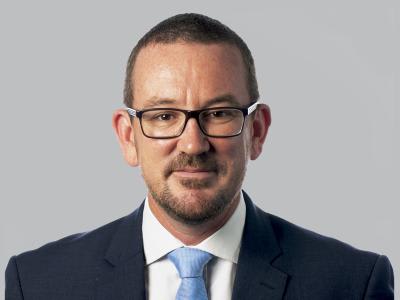We sat down with Richard Stone, Partner – Restructuring & Recovery, RSM Australia to talk about the collapse of Healthscope, and the implications for Australia’s private health care system.
With nearly 40 hospitals and a long history as a key player in Australia’s private healthcare sector, Healthscope’s recent collapse into receivership has raised serious questions — not just about financial mismanagement, but about how we protect essential services when the numbers no longer add up.
“This is not a typical business failure”, Richard explains. When a builder folds, projects are delayed. When a retailer collapses, the shelves go empty. But when a private hospital operator goes under, the stakes are much higher.
Patients, staff, suppliers, and insurers are all left asking the same thing: what now?
Why Healthscope’s Fall Matters
Receivership is different from liquidation or voluntary administration. In Healthscope’s case, the lenders- including major banks, have stepped in to recover their debts by selling the business to a new owner. But unlike many other industries, shutting the doors isn’t an option. Surgeries must go on. Beds need staffing. And lives are literally on the line.
That’s why this case is so complex. Healthscope’s scale and sensitivity, combined with a $1.6 billion debt pile, mean receivers must balance commercial recovery with continuity of care.
The Hidden Pressure Points
Healthscope’s problems didn’t start overnight. Brookfield acquired the company for $5.7 billion in 2019- just before COVID disrupted elective surgery and hospital profitability. Debt continued to mount. By mid-2024, Brookfield conceded its equity was worthless, handing the keys back to the banks.
“This isn’t a one-off. Just like the fixed-price contract woes that triggered collapses in construction, healthcare operators are under increasing strain from rising wage costs, tighter margins, and stagnant private insurance rebates. Providers are being squeezed from all sides.” states Richard.
What About the People?
Staff want job security. Patients want uninterrupted care. Creditors want answers. And suppliers, many of whom operate on tight margins themselves — want to know if and when they’ll get paid.
During a receivership, the immediate focus is maintaining business continuity. That means:
- Keeping hospitals open
- Paying wages
- Reassuring stakeholders that “business as usual” is the aim
- Stabilising cash flow while assessing which hospitals are viable — and which may need to be sold, merged, or closed
In these moments, clear communication is everything.
Will the Government Step In?
When Virgin Australia entered administration during COVID, there was public pressure on the government to intervene. It didn’t, but ultimately, a new owner emerged. In Healthscope’s case, the question is more urgent. “The federal government can’t afford a public health crisis triggered by private collapse.”
Whether it’s direct intervention or subtle support behind the scenes, the government and insurers will be key players in shaping what happens next.
So, What Does Happen Next?
Receivers have already signalled strong interest from buyers, at least 10 credible expressions before they even opened the sale process. But buyers won’t want the debt. They’ll want clean assets, viable operations, and opportunities to streamline costs and lift profitability.
Some hospitals may close. Others will likely be sold individually or in groups. The business will survive, but not in its current form.
Lessons for Lenders, Boards and Operators
“Healthscope’s story is a powerful case study in what happens when leveraged buyouts meet unpredictable markets. For boards and lenders, it’s a reminder that financial
Structuring must be resilient, not just aggressive”. For private healthcare operators, it’s time to reassess exposure, cashflow, and the assumptions underpinning growth.
And for policymakers? Richard says, “This is a wake-up call. When critical services like hospitals or transport collapse, it’s not just a balance sheet issue — it’s a societal one. The financials matter, but so does the impact on people. That’s why any successful restructure needs both commercial clarity and community responsibility.”
Need clarity in times of crisis?
Whether you're navigating financial headwinds, assessing risk, or responding to distress, RSM’s Restructuring & Recovery team is here to help. Get in touch with Richard Stone or your local adviser to explore your options early, before small problems become system-wide ones.





